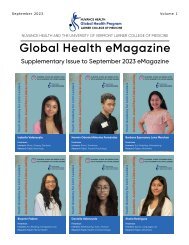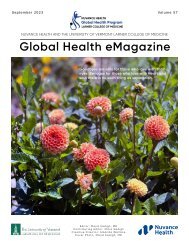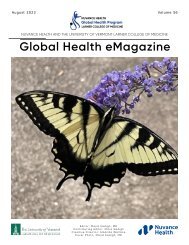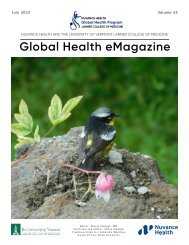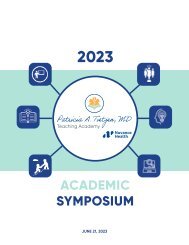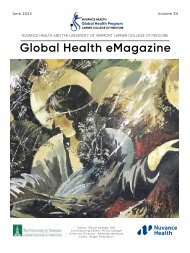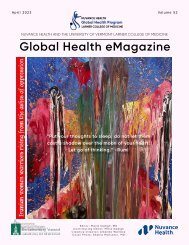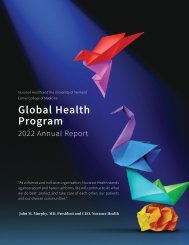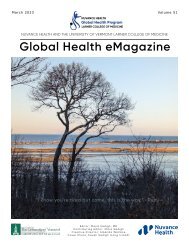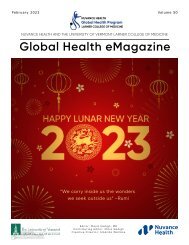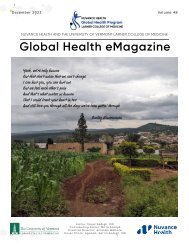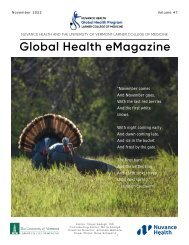eMagazine January 2023
You also want an ePaper? Increase the reach of your titles
YUMPU automatically turns print PDFs into web optimized ePapers that Google loves.
OUR PEOPLE,<br />
OUR MISSION<br />
Global Health<br />
<strong>eMagazine</strong><br />
<strong>January</strong> <strong>2023</strong><br />
Perspective<br />
Highlights<br />
Reflections<br />
Innovation and Technology<br />
Nursing Division<br />
Women’s Health Education<br />
Global Local<br />
Art to Remind Us of Who<br />
We Can Be<br />
Article of the Month<br />
Video of the Month<br />
Our Beautiful Planet<br />
Welcome<br />
Congratulations<br />
Among the Letters<br />
Global Health Family<br />
Calendar<br />
Photo News<br />
Photo Gallery<br />
Resources<br />
attributed to CVD, which is around 659,000 Americans every year (CDC, 2022). As<br />
the number one killer in the U.S., it further emphasizes the importance of studying<br />
heart disease and its current status.<br />
Additionally, heart disease has the largest economic toll on the U.S. healthcare<br />
system, costing $216 billion per year and leading to $147 billion in lost productivity<br />
(CDC, 2022). The impact of CVD clearly extends beyond individual health<br />
and impacts many other aspects of society. According to a 2017 study by RTI<br />
International, costs related to this disease are expected to exceed $1 trillion by<br />
2035. These increasing costs will only further put a strain on the already inefficient<br />
American health care system, especially as the vulnerable population continues<br />
to increase.<br />
Heart disease has a wide impact in the U.S., but not all people are impacted<br />
the same. There are many social factors that play major roles in how likely a<br />
person is to suffer from CVD, especially socioeconomic status, race & ethnicity,<br />
immigration, and stress. When analyzing how different populations experience<br />
heart disease, South Asians in the U.S. are at heightened risk compared to the<br />
general population. In a 2006 study published by the American Heart Association,<br />
South Asians had the highest CHD mortality compared to those of European<br />
or Chinese descent (Gupta, Singh, and Verma, 2006). This group includes those<br />
with roots in India, Pakistan, Sri Lanka, Nepal, and Bangladesh, and has such<br />
a diversity of culture as well as lifestyles which makes this issue particularly<br />
interesting. As a person of South Asian descent, I feel particularly passionate<br />
about this issue as it deals with my own life and has personal implications.<br />
One of the key risk factors for heart disease includes stress, which can be<br />
heightened by educational and occupational events. Immigrants from Asia have<br />
the highest median household income among all groups in the U.S. (Hanna and<br />
22<br />
Ebola continued on next page >>




